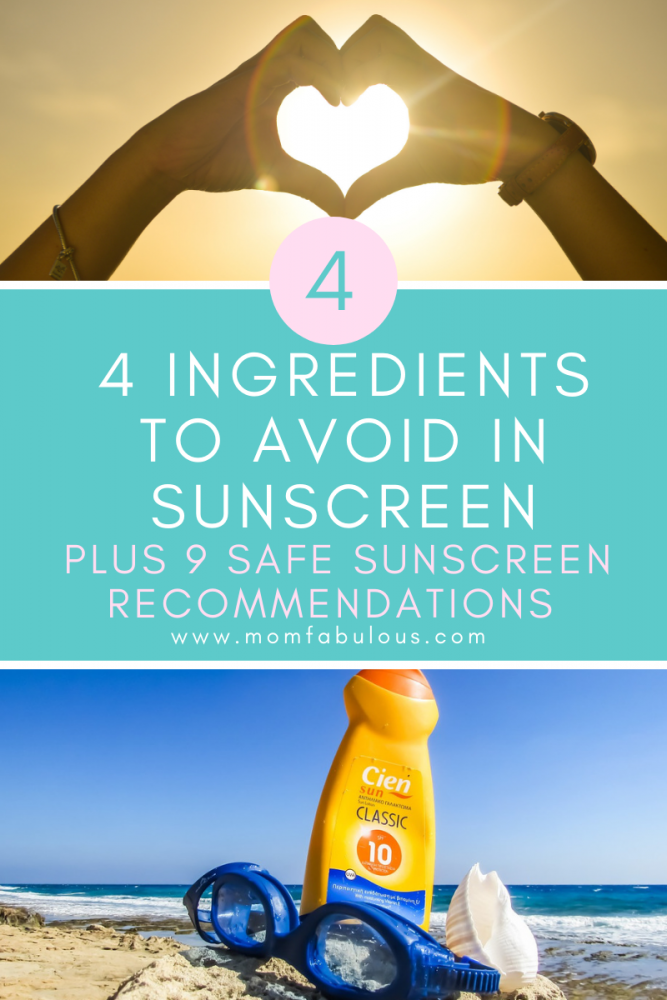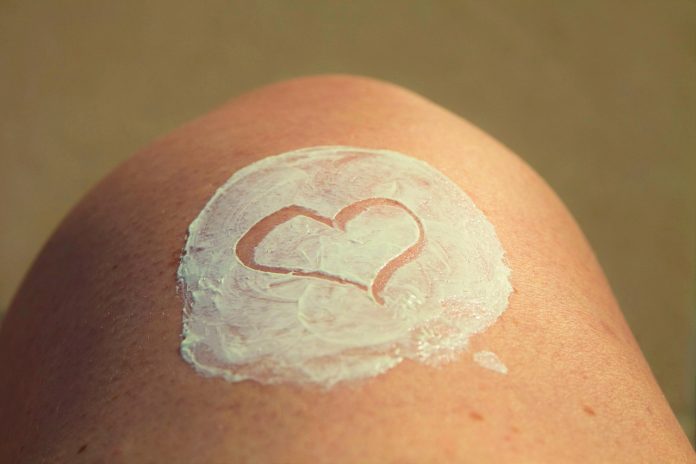
Did you know that trace amounts of sunscreen chemicals can be detected in blood, urine, and breastmilk samples? That’s not a problem if the ingredients are safe…but most of them are not.
Summer is upon us and the sun is ever shining. Doctors and dermatologists recommend sunscreen to keep your skin safe and to avoid skin cancer. But they don’t warn you about the toxic ingredients found in most sunscreens on the market.
Keep reading to learn about which ingredients to avoid in sunscreens, and suggestions of natural brands to buy!
How sunscreen blocks the sun
Sunscreen blocks the sun in two ways: via minerals or chemicals.
- Mineral sunscreen uses titanium dioxide or zinc oxide to physically protect your skin from the sun.
- Chemical sunscreen using chemicals to avoid sun exposure on your skin. These commonly include oxybenzone, octinoxate, octocrylene, octisalate, homosalate, or avobenzone. These harmful chemicals are absorbed into your body, disrupt hormones, and often cause allergies. In particular, oxybenzone was found in nearly every single American’s body and 85% of mother’s breast milk contain one of this chemicals.
Sunscreen ingredients to avoid
1 – Oxybenzone (also known as benzophenone-3)
As mentioned above, this toxic chemical and allergen were discovered in almost every single American. It’s probably the worst ingredient in conventional sunscreens and the most common one to be avoided. It’s essential a form of synthetic estrogen that disrupts your hormones. Hawaii also banned this ingredient because it apparently harms coral reefs too.
2 – Octinoxate
Much like Oxybenzone, this mixes up your hormones, and even takes a toll on your thyroid and is associated with reproductive system toxicity. In animal studies, octinoxate caused changes in their animal’s behaviors. Interestingly, this UV filter only blocks UV-B rays, not UV-A rays.
3 – Homosalate
This chemical absorbs the UV rays so that your skin doesn’t. Like many of the other toxic ingredients, it disrupts your hormones. Homosalate is commonly found in the environment because it’s doesn’t break down easily; while on your skin, you’re more likely to absorb pesticides and bug sprays into your body.
4 – Avobenzone
Although avobenzone doesn’t disrupt hormones like other harmful ingredients, it is highly associated with irritation.
This is a synthetic form of vitamin A. Hey, vitamin A is an antioxidant that is good for our skin! …Except when this ingredient interacts with the sun. The UV rays actually cause retinyl palmitate to create free radicals – the opposite of antioxidants! It’s unfortunately associated with an increased growth rate of skin lesions and tumors.
Also avoid:
- Octocrylene and octisalate are common skin allergens to avoid.
- The Environmental Working Group recommends that you avoid benzophenone-4, benzophenone-8, menthyl anthranilate, PABA, Padimate O, and trolamine salicylate.
- Parabens are always encouraged to be avoided. Some that are found in sunscreen include: methylparaben, ethylparaben, propylparaben, and butylparaben. Skip anything with “para” in the name to be on the safe side!
- As always, don’t use spray sunscreens (avoid inhaling the chemicals).
Safer Sunscreen Options
Obviously you don’t want your hormones disrupted, your kids to become sensitive to allergens, your teens to add toxic ingredients to their reproductive system, or your hubby to grow lesions or tumors. Avoid the unhealthy, toxic, harmful ingredients commonly found in sunscreens and try one of the brands instead.
For your kids:
- Badger Sport Sunscreen, SPF 35
- Thinkbaby Safe Sunscreen, SPF 50+ (more than 2000 reviews on Amazon!)
- Alba Botanica Kids, SPF 45
For your body:
- Babyganics Baby Sunscreen Lotion, SPF 50 (Yes, it says it’s for babies, but it works for big kids and grown ups too!)
- Jason Mineral Based Sunscreen Lotion, SPF 30
- Blue Lizard Australian Sunscreen, SPF 30+
For your face:
- Alba Botanica Facial Sunscreen, SPF 30
- Juice Beauty Sheer Mineral Moisturizer, SPF 30
- Jane Iredale Powder-Me Dry Sunscreen, SPF 30
The Environmental Working Group has a sunscreen ingredients to avoid.
The Wellness Mama shares a long list of safe sunscreen brands to try.
Curious to learn more about what’s in your beauty products?
Discover 4 ingredients that you want to see on your beauty ingredient label, and the 10 ingredients to avoid. There are specific foods and drinks that nourish your skin too! Check out our beauty section to learn more about homemade beauty products and how to keep you skin radiant!


